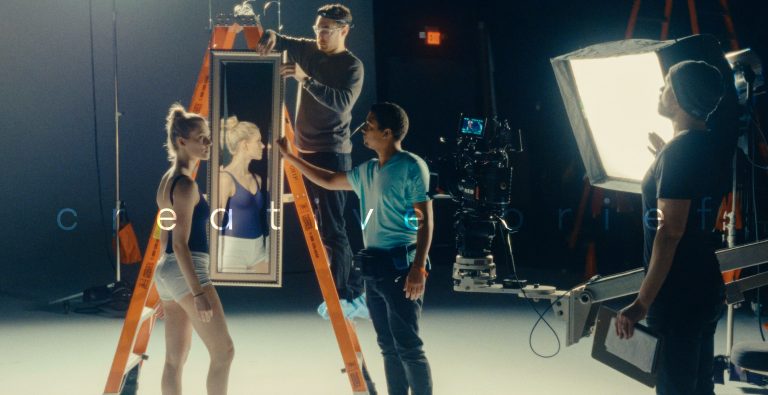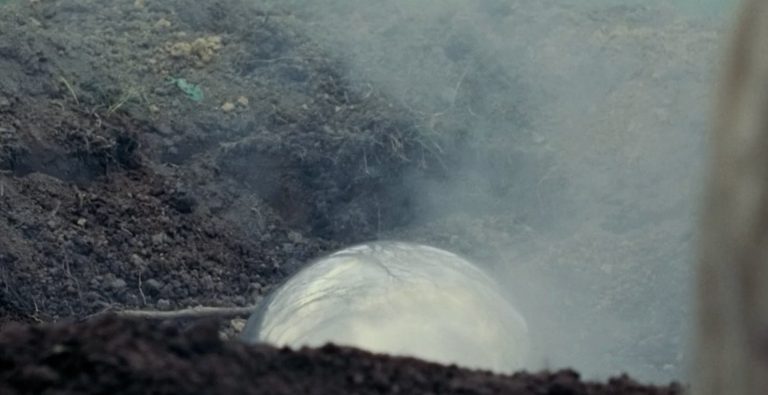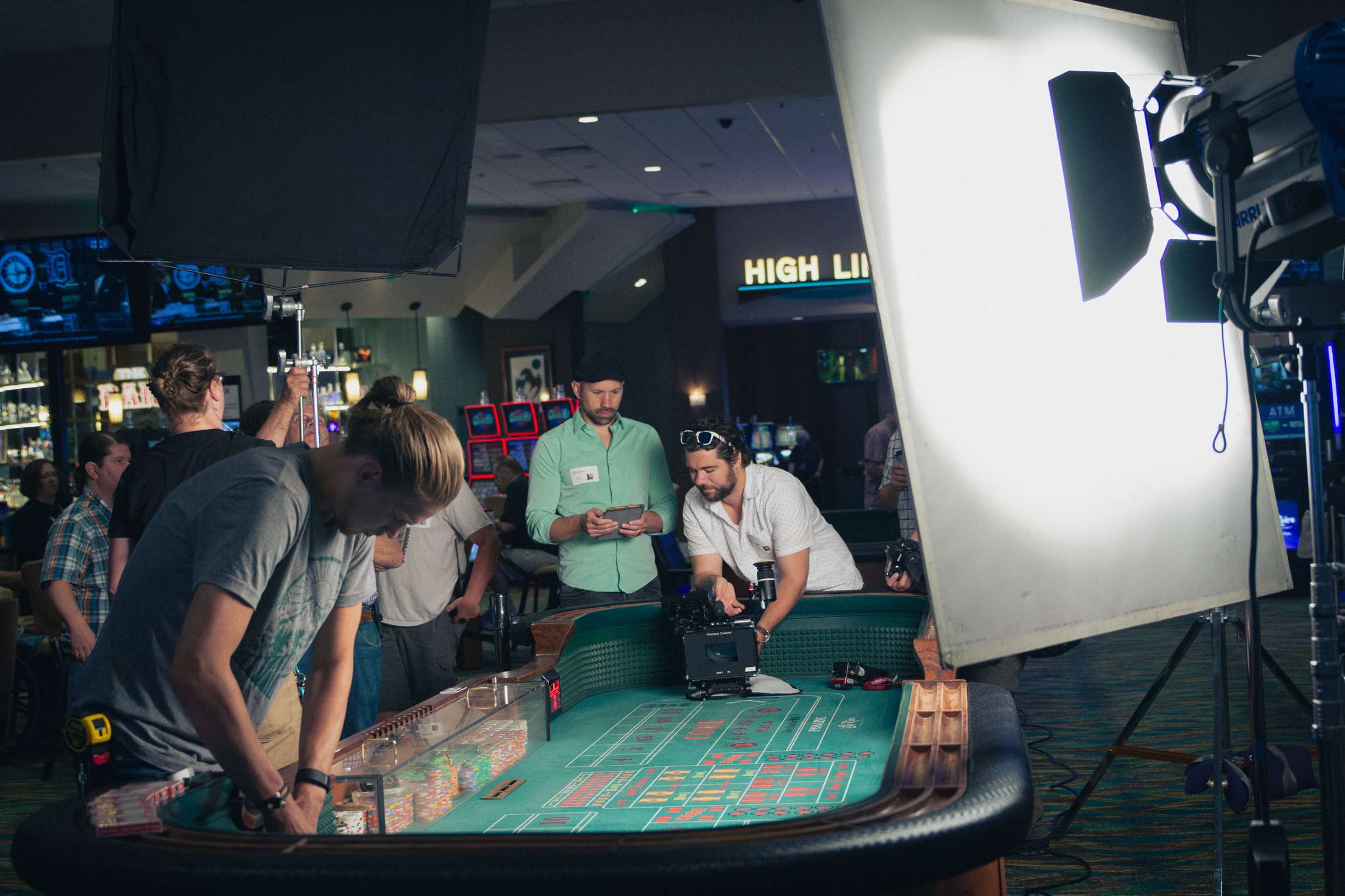
The importance of a Creative Brief for Video Production
Picture this: A mysterious, otherworldly sphere lands in your backyard, and you stare at it like it's an alien artifact from the farthest reaches of the cosmos. That's what tackling a video project can feel like sometimes - utterly bewildering and a tad intimidating. But fear not, earthling! DropDrop is here with our "Video Production Creative Brief" - the Rosetta Stone for your video project that will decode all the cryptic elements and make your journey to success less of an interstellar enigma.

Choreographing Your Brand's Story with DropDrop
Your team is on the clock, like a dancer awaiting her cue, needing more than just movement – you need a captivating story for your brand. Enter DropDrop, armed with our expertise and a powerful tool: the “Video Production Creative Brief.”
This isn’t a routine form; it’s a storyboard helping you craft your narrative. Born from DropDrop’s extensive experience, it acknowledges every video project as a unique performance with distinct requirements.
Clients approach DropDrop, eager as a performer before her debut. DropDrop understands this zeal but knows an effective video strategy requires more than a quick financial twirl. They capture all necessary details from the start, even if a client hasn’t choreographed a plan.
The Video Production Creative Brief extracts essential elements for a successful video performance. It ensures each step resonates universally, creating content that’s visually stunning with a compelling narrative.
Perfection requires time, patience, and precision. With DropDrop, you’re partnering with a team that values rehearsal as much as the final act.
Let’s channel this pressure into innovation. With DropDrop’s approach and the Video Production Creative Brief, choreograph a video plan that’s not just effective, but truly groundbreaking. You’re the dancer against the white backdrop, the story. Make it worth telling.
Step 1
The Overview
Marketing is an intricate ballet, each step meticulously planned yet fluidly executed. Are you seeking to amplify your resonance in a new market, or hoping to gain valuable insights about a particular customer segment?
Consider the video beside this text. It’s not just a commercial; it’s a story about a young girl discovering the magic of music through premium audio products. This isn’t a hasty sequence of buzzwords like “increase awareness” or “educate.” It’s a narrative designed to inspire our viewers to take action.
Each frame of this video is a step in our dance, carefully choreographed and timed to perfection. We don’t rush the performance; instead, we let the story unfold at its own pace, allowing the audience to absorb the information and appreciate the journey.
The key here is understanding the result we want to achieve. What should our viewers do after watching this? How should they feel? These questions guide our creative process, ensuring that our content is not only engaging but also effective.
Without a clear roadmap, we risk losing our audience in a flurry of ideas presented too quickly. But with careful planning and execution, we can create a captivating narrative that not only showcases our product but also resonates with our audience on a deeper level.
Step 2
Target Audience
Who is the true star of this video? Who does it speak to? Our goal is to captivate the most valuable viewers, those who will resonate with our message and feel compelled to act.
It’s easy to blur the lines when dealing with a broad audience. Pinpointing specific attributes, preferences, potential product or service appeal, and participation incentives can be challenging.
Yet, when we define our target, the connection becomes stronger. Look at the behind-the-scenes footage from our museum commercial on the right. We’ve crafted personas that represent the museum’s target audience, providing a tangible representation of who we’re speaking to.
A well-crafted narrative, tailored to our specific audience, elevates our message. It may not resonate with everyone, but it will strike a chord with those we’re trying to reach, making the message more memorable.
The crux lies in setting your product or service apart in the market. To do this, we need a clear understanding of who this video is for and what it represents. What aspects of your brand’s personality attract and engage this audience?
Step 3
Vital Narrative
The behind the scenes clip to your right is a prime example of the power of aligning your key narrative with your intended audience – in our case, young women. Our protagonist, the heroine of our story, delivers the voiceover. The energy on set crackles with intensity, a tangible testament to the effectiveness of tailoring our core message to resonate with our target persona.
Identifying and understanding your audience’s needs are crucial first steps in aligning your narrative with your audience. It’s not just about knowing who they are, but also understanding their desires, fears, and how they consume content.
By crafting in-depth audience profiles, you can create narratives that speak directly to the people you’re trying to reach. This alignment allows for more effective targeting and engagement, ensuring your messaging resonates with your audience’s needs and desires.
Refreshing your brand narrative to align with your organizational goals and target audience can be a powerful strategy. By aligning your brand with market findings, you can better understand your target audience, differentiate yourself from competitors, and create a unique value proposition.
Confidently asserting who you are and what you stand for can be incredibly compelling. This is your narrative, tailored to resonate with those you seek to impact. It’s your opportunity to plant your flag and make your mark.
Step 4
Personality and Tone
Each business expresses itself uniquely, much like a distinctive voice or a one-of-a-kind fingerprint. What are the phrases that come to mind when you think of authentic conversations about your brand?
Look at the music video clip to your right that we produced. The band’s presence, the dramatic laser lights, and the projection mapping all create a distinct personality and tone. This is a prime example of how you can infuse character, style, and persona into your product or company.
Remember, film is a visual medium. It’s not always about the words spoken but rather the imagery presented and the impression it leaves on the viewers. Is your brand approachable and polite, contemplative and serious, or bold and irreverent? Whatever your brand’s personality may be, it should resonate with your target audience, creating a connection they can identify with.
Step 5
Gauging Your Rivals
When crafting a creative brief, the pivotal question is, “What already exists?” To make a significant impact for our clients, we delve into the gaps. Our intuitions serve as a compass, directing us towards what works and away from what doesn’t. We ponder – where are the uncharted territories our competitors have shied away from?
Our answer: Narrative. The behind-the-scenes video on the right offers a sneak peek into our journey with Liquid Web. It stands as a testament to our unwavering commitment to authenticity, a refreshing departure from advertising clichés, and an ode to ‘Theatrical Realism’.
We chose to abandon the excessively data-centric approach and instead embraced a blend of fast-paced action, humor, lightness, and animated nuances. These elements collectively underscore our promise of swift, dependable service. Our bold approach steered us towards entirely fresh ideas and opened doors to previously unexplored paths.
This is the heart of a successful audit: not just identifying what’s out there, but using it to create something distinctive. That’s where authenticity comes from.
Step 6
Mood Board
A mood board is a powerful tool that aids in translating ideas, words, actions, emotional undertones, attitudes, and all other forms of non-verbal communication into visual expression. It’s a blend of hues and tones that hint at potential locations, wardrobe choices, styling, set designs, and lighting arrangements, adding depth and subtext to your video.
The primary task here is to begin crafting a visual universe for our characters, talent or furniture to live in. Based on the narrative, the setting often pre-exists, and it’s our responsibility to uncover it.
To your right, you’ll find a brief clip from a 3D animation project we completed for Symmetry. Prior to getting started, the agency creative director presented us with various examples to help achieve this particular pure studio white aesthetic, designed to highlight the product and make the table truly stand out.
Step 7
Video Platforms
Start by asking yourself: Where will your video first step into the limelight? Creating minor variations of the main video for each platform can be a budget-friendly way to extend your campaign’s reach. Is your primary video destined for the spotlight on your homepage? Or is it a TV ad with strict time constraints? Maybe it’s a series of 15-second vertical snippets for Facebook and Instagram stories? Every platform has its unique rules of the game and best practices. It’s vital to understand the role your video plays on each platform.
To your right in this brief clip, we’ve taken a light-hearted turn; a mildly amusing situation: a grocery worker, mid-scan, abruptly concludes the transaction. A plethora of items remain on the conveyor, leaving the customer puzzled. This subtle comedic moment poses the question, “Why halt if there’s no need to?” Before crafting this concept, we pinpointed the video’s ultimate destination: a tightly-packed 15-second TV commercial for Gerald R. Ford Airport. It was crucial to maintain equilibrium between the call-to-action and a sprinkle of humor to hook viewers instantly. The platform played a key role in shaping the concept.
A video without a platform is like a joke without a punchline: it just doesn’t land.
Step 8
Timeline
The deadline is a crucial factor in any project. Our workflow includes several steps: establishing and finalizing a project schedule, initiating a kick-off meeting, scriptwriting and storyboarding, crewing process, location scouting, casting, shotlisting, creating shooting boards, conducting a pre-production meeting, arranging travel if necessary, and finally, proceeding to production.
As you can discern, reaching the production stage involves significant effort (I’ve spared you many subtasks for simplicity). After production, we transfer the footage onto multiple drives and begin post-production.
DropDrop typically works through three rounds of feedback, depending on the project scope and deadline, with one final ‘sign off’ after the color grading and final sound mix are completed. The standard timeline for live production generally ranges from 40 to 120 days.
To your right, you’ll find a clip from a project we completed for a client in the Health & Beauty sector, specifically the Skin Care Industry. You’ll see our crew diligently working against a green screen backdrop. This project spanned three months and involved around 20 different roles, ranging from Concept, Script, Storyboards, Production, VFX, Music to the final delivery. The video runs for a concise, impactful 60 seconds. This visual representation gives a clearer understanding of the intricacies, dedication, and fun behind our production process.
Step 9
Budget
Companies with experience in spending and hiring out for video production typically have an idea of the costs associated with the job. However, if you are new to the process we can help you create a budget based on your needs and vision.
It’s good to know up front if there are any financial restrictions in determining the approach for your project before we dive in too deep. The cost of video is determined by so many variables, and it’s almost never determined by length. If you ever ask someone what the cost of video is per minute and they give you an answer, run for your life.
What happens in that minute? Does talent stand in front of a white back drop and mumble some corporate jargon? Or are there buildings exploding in the background as a car whips past frame while a monster chases after the driver Jurassic Park style?
Those two scenarios have entirely different production scopes. So, it’s good for us to know which one you need… we hope it’s the monster one.
